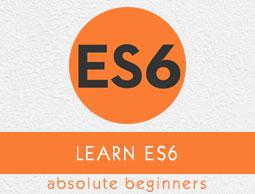ES6 - Object Extensions
String extension
Some popular methods added to the String object in ES6 are −
Regex extensions
In a regular expression, for example, /[A-Z]/g, the beginning and ending / are called delimiters. Anything after the closing delimiter is called a modifier. ES6 adds a new modifier /g where g stands for global. This match all instances of the pattern in a string, not just one.
Example
The following example searches and returns all upper-case characters in the string.
<script>
let str = 'JJavascript is Fun to Work , very Fun '
let regex = /[A-Z]/g // g stands for global matches
let result = str.match(regex);
console.log(result)
</script>
The output of the above code will be as given below −
["J", "J", "F", "W", "F"]
Regular expression searches are case-sensitive. To turn-off case-sensitivity, use the /i modifier.
Example
The following example performs a case insensitive global match. The example replaces fun with enjoyable.
<script>
// /gi global match ignore case
let str = 'Javascript is fun to Work , very Fun '
let regex = /Fun/gi;
console.log(str.replace(regex,'enjoyable'));
console.log(str)
console.log(str.search(regex))
</script>
The output of the above code will be as shown below −
Javascript is enjoyable to Work , very enjoyable
Javascript is fun to Work , very Fun
15
Number
Some popular methods added to the Number object in ES6 are −
| Sr.No |
Method & Description |
| 1 |
Number.isFinite(value)
method determines whether the passed value is a finite number. Returns true/false.
|
| 2 |
Number.isNaN(value)
returns true if the given value is NaN and its type is Number; otherwise, false.
|
| 3 |
Number.parseFloat(string)
A floating-point number parsed from the given value. If the value cannot be converted to a number, NaN is returned.
|
| 4 |
Number.parseInt(string,[ radix])
method parses a string argument and returns an integer of the specified radix or base.
|
Math
Some popular methods added to the Math object in ES6 are −
| Sr.No |
Method & Description |
| 1 |
Math.sign()
function returns the sign of a number, indicating whether the number is positive, negative or zero.
|
| 2 |
Math.trunc()
function returns the integer part of a number by removing any fractional digits.
|
Methods of Array in ES6
The table given below highlights the different array methods in ES6 along with the description.
| Sr.No |
Method & Description |
| 1 |
copyWithin()
shallow copies part of an array to another location in the same array and returns it without modifying its length.
|
| 2 |
entries()
method returns a new Array Iterator object that contains the key/value pairs for each index in the array.
|
| 3 |
find()
method returns the value of the first element in the array that satisfies the provided testing function. Otherwise undefined is returned..
|
| 4 |
fill()
method fills all the elements of an array from a start index to an end index with a static value. It returns the modified array.
|
| 5 |
Array.of()
method creates a new Array instance from a variable number of arguments, regardless of number or type of the arguments.
|
| 6 |
Array.from()
method creates a shallow copy from an array like or iterable object.
|
Object
Methods related to Object function are mentioned below in the table along with the respective description.
| Sr.No |
Method & Description |
| 1 |
Object.is()
method determines whether two values are the same value
|
| 2 |
Object.setPrototypeOf()
method sets the prototype of a specified object to another object or null.
|
| 3 |
Object.assign()
method is used to copy the values of all enumerable own properties from one or more source objects to a target object. It will return the target object.
|


